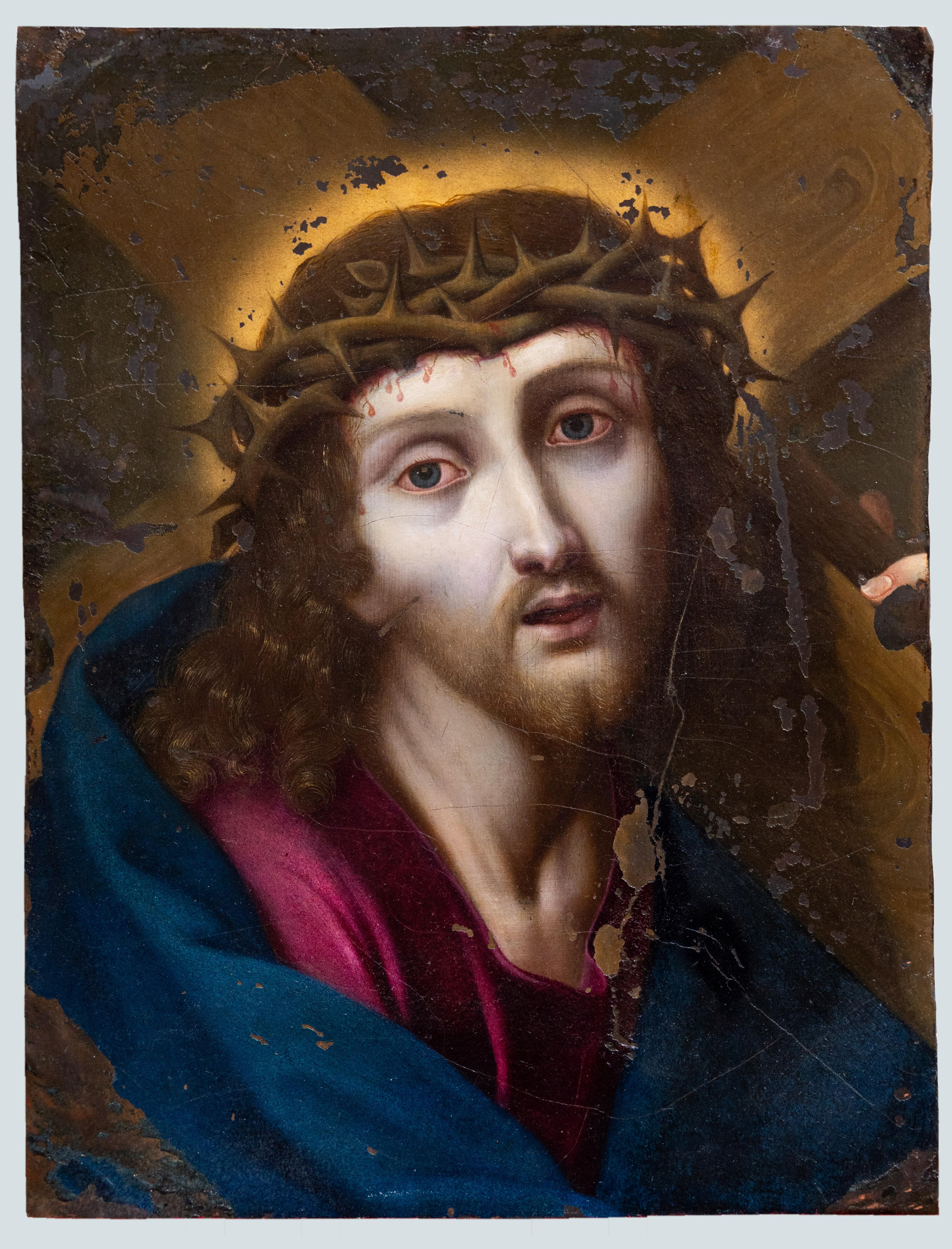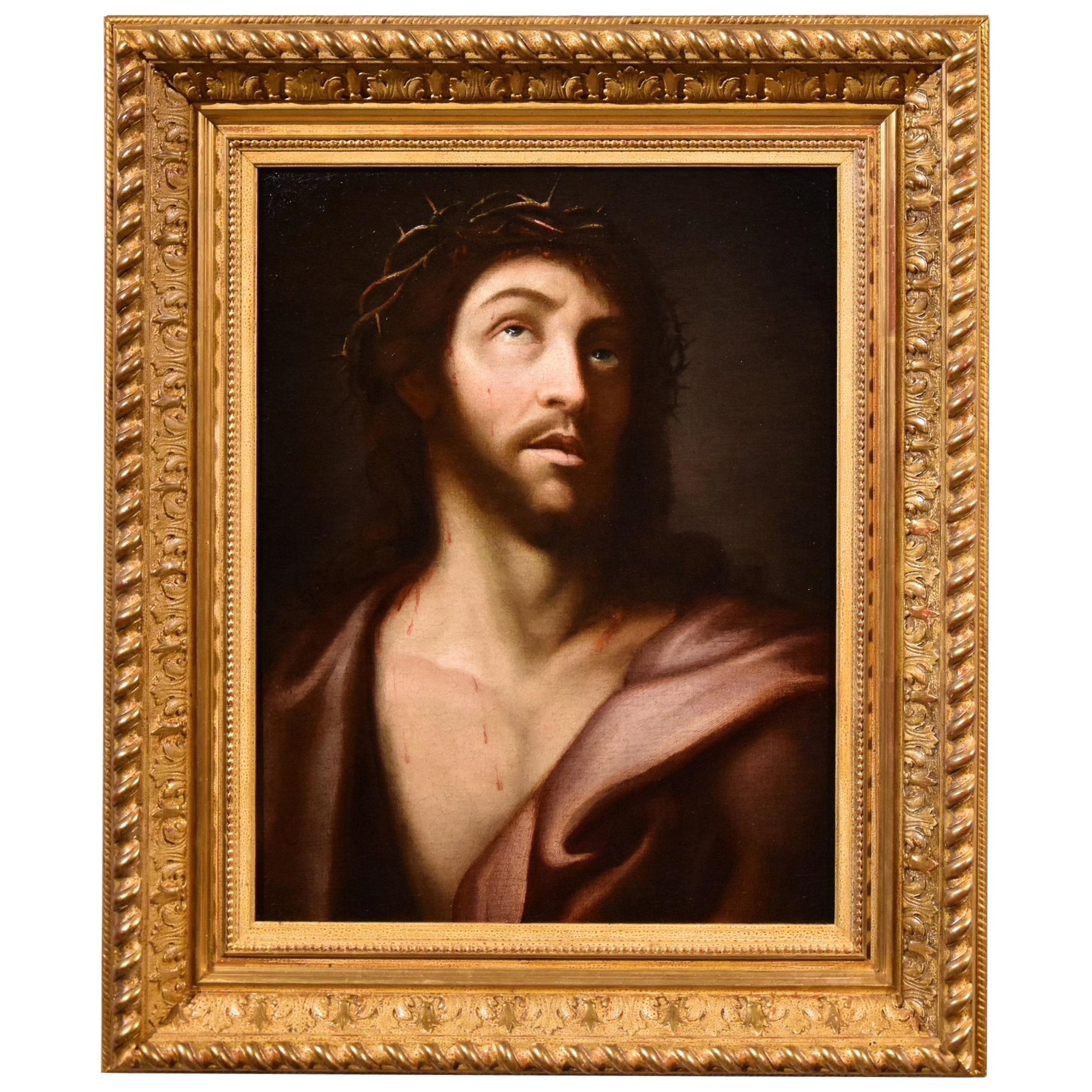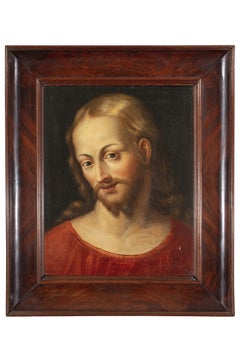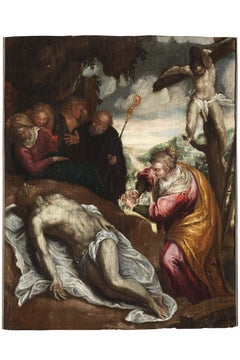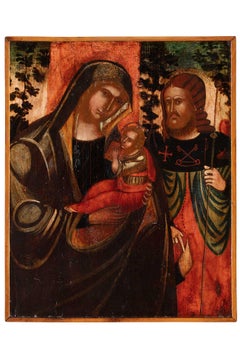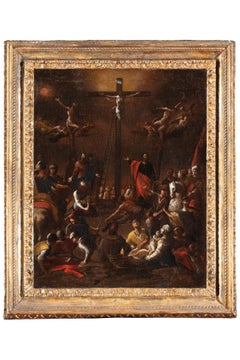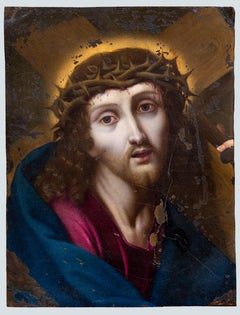Items Similar to 15th Century By Maestro della Pala Sforzesca Ecce Homo Tempera on Panel
Video Loading
Want more images or videos?
Request additional images or videos from the seller
1 of 20
Maestro della Pala Sforzesca15th Century By Maestro della Pala Sforzesca Ecce Homo Tempera on Panel15th century
15th century
$52,045.21
$65,056.5120% Off
£38,689.84
£48,362.3020% Off
€43,520
€54,40020% Off
CA$72,601.92
CA$90,752.4020% Off
A$78,756.68
A$98,445.8620% Off
CHF 41,414.66
CHF 51,768.3320% Off
MX$958,309.64
MX$1,197,887.0520% Off
NOK 517,750.01
NOK 647,187.5120% Off
SEK 488,301.84
SEK 610,377.3020% Off
DKK 331,431.18
DKK 414,288.9720% Off
About the Item
15th Century Maestro della Pala Sforzesca
Title: Ecce Homo
Medium: Tempera on Panel
Dimensions: without frame 64.9 x 53.2 – with frame 82 x 70 x 5 cm
Beautiful "cassetta" frame in engraved, carved, gilded wood.
Oral Expertise by Prof. Carlo Volpe.
- Creator:Maestro della Pala Sforzesca (Italian)
- Creation Year:15th century
- Dimensions:Height: 25.6 in (65 cm)Width: 21.07 in (53.5 cm)
- More Editions & Sizes:without frame 64.9 x 53.2 – with frame 82 x 70 x 5 cmPrice: $65,057
- Medium:
- Movement & Style:
- Period:
- Condition:
- Gallery Location:Milano, IT
- Reference Number:1stDibs: LU1701213662922
About the Seller
5.0
Vetted Professional Seller
Every seller passes strict standards for authenticity and reliability
Established in 1964
1stDibs seller since 2021
- ShippingRetrieving quote...Shipping from: Milano, Italy
- Return Policy
Authenticity Guarantee
In the unlikely event there’s an issue with an item’s authenticity, contact us within 1 year for a full refund. DetailsMoney-Back Guarantee
If your item is not as described, is damaged in transit, or does not arrive, contact us within 7 days for a full refund. Details24-Hour Cancellation
You have a 24-hour grace period in which to reconsider your purchase, with no questions asked.Vetted Professional Sellers
Our world-class sellers must adhere to strict standards for service and quality, maintaining the integrity of our listings.Price-Match Guarantee
If you find that a seller listed the same item for a lower price elsewhere, we’ll match it.Trusted Global Delivery
Our best-in-class carrier network provides specialized shipping options worldwide, including custom delivery.More From This Seller
View All16th Century by Bernardino Detti Face of Christ Oil on Canvas
Located in Milano, Lombardia
Bernardino Detti (Pistoia, Italy, 1498 - 1572)
Title: Face of Christ
Medium: Oil on canvas
Dimensions: without frame 41 x 32 cm - with frame 47 x 55.5 cm
Antique box frame made of solid wood and walnut burl.
Publications: unpublished
The painting by Bernardino Detti (1498 - 1572) depicts the face of Jesus...
Category
16th Century Old Masters Figurative Paintings
Materials
Canvas, Oil
16th Century by Venetian Maestro Deposition of Christ Oil on Panel
Located in Milano, Lombardia
16th Century Venetian Maestro
Title: Deposition of Christ
Medium: Oil on panel
Dimensions: without frame 40 x 25 cm
Formerly Canesso Collection, Paris.
Fairs: The International Biennial of Antiques in Florence 2022 (BIAF, Biennale Internazionale dell’Antiquariato di Firenze)
Publications: Bozzetti, modelletti, sketches: dalla collezione di Giorgio Baratti (From the Giorgio Baratti Collection) curated by Anna Orlando, Agnese Marengo and Annalisa Scarpa, Genoa, 2022, pp. 22, 23.
In this precious panel we can admire a lament over the body of Christ by a large group of bystanders among whom we can recognise the Virgin and, in the foreground, St Catherine of Alexandria...
Category
16th Century Old Masters Figurative Paintings
Materials
Oil, Wood Panel
15th Century by Circle of Nicolò Zafuri Madonna with Child Oil on Canvas
Located in Milano, Lombardia
Nicolò Zafuri (circle of) (documented in Candia between 1487 and 1500, died before 10 July 1501)
Title: Madonna with Child
Medium: Oil on panel
Dimensions: without frame 49 x 40 cm
...
Category
15th Century and Earlier Old Masters Portrait Paintings
Materials
Cotton, Cotton Canvas, Oil
17th Century by Scipione Compagno Crucifixion Oil On Canvas
Located in Milano, Lombardia
Scipione Compagno (active in Naples in XVII century)
Title: Crucifixion
Medium: Oil on canvas
Dimensions: without frame 64 x 52.5 cm - with frame 80 x 67 cm
Antique wooden cassetta frame carved, sculpted and gilded by Mecca technique
Expertise by Nicola Spinosa, art historian
Publications: Bozzetti, modelletti, sketches: dalla collezione di Giorgio Baratti...
Category
Late 17th Century Italian School Landscape Paintings
Materials
Cotton Canvas, Canvas, Oil
$17,029 Sale Price
22% Off
17th Century By Guidotti aka Cavalier Borghese Salomé and the Baptist Oil/canvas
Located in Milano, Lombardia
Cavaliere Paolo Guidotti, also known as il Cavalier Borghese (Lucca, Italy, 1559 - 1629)
Title: Salomé and the Baptist
Medium: Oil on canvas
Dimensions: without frame 90 x 68.5 cm -...
Category
Early 17th Century Old Masters Figurative Paintings
Materials
Oil, Canvas
18th Century by Pietro Bardellino Mary Magdalene Painting Oil on Canvas
By Pietro Bardellino
Located in Milano, Lombardia
Pietro Bardellino (Naples, Italy, 1731 – 1806)
Title: Mary Magdalene
Medium: Oil on canvas
Dimensions: without frame 75 x 60 cm – with frame 97 x 82 cm
Antique shaped and carved wood...
Category
Mid-18th Century Old Masters Portrait Paintings
Materials
Oil, Canvas
$15,977 Sale Price
22% Off
You May Also Like
Ecce Homo Christ Metsys 16th Century Paint Oil on table Flemish Old master
Located in Riva del Garda, IT
16th-century Flemish master
Circle of Quentin Metsys (Leuven, 1466 - Antwerp, 1530)
Ecce Homo
oil on panel
cm. 34 x 23
with frame 47 x 37 (not contemporary)
An important painting...
Category
16th Century Old Masters Paintings
Materials
Oil
$7,337 Sale Price
20% Off
Ecce Homo Coxie Paint 16/17th Century Paint Oil on table Old master Flemish Art
Located in Riva del Garda, IT
Circle of Michael Coxie (Malines, 1499 - Malines, 1592)
Ecce Homo with Pontius Pilate
Oil on panel
Flemish school 16th-17th century
112 x 81 cm - framed 121 x 90 cm.
The proposed p...
Category
16th Century Old Masters Paintings
Materials
Oil
$8,457 Sale Price
20% Off
Ecce Homo Castello 17th Century Paint Oil on canvas Old master Genoese school
Located in Riva del Garda, IT
17th-century Genoese School
Workshop of Valerio Castello (Genoa, 1624 - Genoa, 1659)
Ecce homo
Oil on canvas
117 x 99 cm.
In frame 138 x 118 cm.
The Ecce Homo, the subject of our ...
Category
17th Century Old Masters Paintings
Materials
Oil
$14,924 Sale Price
20% Off
Ecce Homo, after Carlo Dolci (1616–1686)
Located in GB
Ecce Homo is a superb, striking and emotive Old Master in oil on copper after the renowned Italian Baroque artist Carlo Dolci. The "Ecce Homo" shows the figure of Christ before His c...
Category
17th Century Baroque Figurative Paintings
Materials
Copper
Ecce Homo Christ Paint Oil on canvas 17th Century Old master Leonardo Italian
Located in Riva del Garda, IT
Lombard painter of the seventeenth century
Ecce Homo
Oil painting on canvas
56 x 43 cm. , framed 75 x 63 cm.
Provenance: Florence, Pandolfini, 5.10.2021, lot 209
The proposed canv...
Category
17th Century Old Masters Paintings
Materials
Oil
$5,969 Sale Price
20% Off
Escuela española (XVIII) - Ecce Homo - Óleo sobre tabla
Located in Sant Celoni, ES
La obra no va firmada
Se presenta enmarcada con un marco de principios del siglo xx en madera tallada
El estado de la obra se puede ver, presenta craquelaciones y faltas de pintura...
Category
Mid-18th Century Old Masters Figurative Paintings
Materials
Oil
